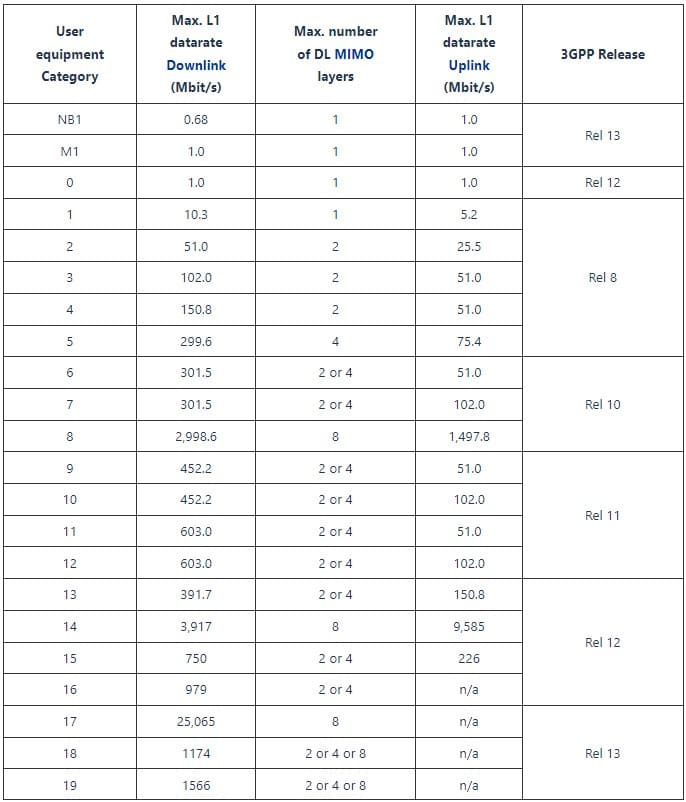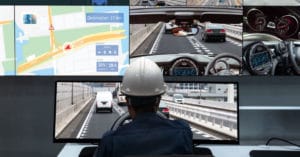Robotaxis, driverless shuttles, sidewalk delivery robots – all have made huge progress in autonomous driving, but they all also still need to have the ability for a remote human operator to supervise them – and when needed, intervene. All driverless use cases require teleoperation, and teleoperation relies on public cellular networks coverage.
A quick reminder – What is teleoperation?
Teleoperation is the technology that enables a human to remotely monitor, supervise, assist, and control (or “drive”) an autonomous vehicle from afar. Teleoperation is crucial for the successful operation of AI-powered autonomous systems which may not know how to make decisions when encountering unusual edge cases.
There are, and will always be, situations or scenarios which a system’s AI does not know how to deal with, thus necessitating the need for a human to remotely perform an action, such as maneuver a driverless vehicle around an obstruction, provide information, or issue a command to follow a certain course of action. Moreover, certain operators within emerging segments such as delivery robots or remotely operated forklifts are adopting a fully teleoperated model – i.e. are being fully operated by a remote human.
Although it sounds like a straightforward concept, teleoperation involves several technologies and systems that must be implemented safely and work together seamlessly. It also requires consistent, low-latency connectivity to enable a high-quality video stream between the human operator and the autonomous system.
The human operator needs to be able to see what the vehicle can “see”. To achieve this, video and other data captured by the cameras and sensors onboard the autonomous vehicle are sent to the operator in real-time, with data transmission handled by onboard modems that are connected to mobile data networks.
Cellular coverage: A major inhibitor of teleoperation connectivity (even in 2022)
Maintaining a reliable, high-quality video stream for teleoperation requires uncompromised connectivity. Many people mistakenly assume that the fact that connectivity issues are so common is due to bandwidth capacity and “outdated” 3G or 4G networks, while the true problem behind connectivity issues is cellular coverage.
Cellular coverage — or lack thereof — is a major inhibitor of seamless teleoperation. Make no mistake, this problem is not solely found in rural areas. Even in today’s ‘always-connected’ mindset, coverage problems can be found in any major city in the world; there are always going to be some areas that for one reason or another have very poor coverage.
Why is cellular coverage still an issue these days?
This issue boils down to mobile operators’ business considerations. Mobile base stations that each cover a pre-defined geographical area are limited in the range that they can provide, regardless of whether they use 4G or 5G technology. Mobile operators make cost optimization decisions around how many base stations they place and the associated costs, versus the range and quality of the signal one gets at any given time.
For these and other reasons, it is extremely difficult for a mobile network operator to provide truly consistent, high-quality, low latency connectivity. There are many variables at play, and these are made even more difficult to manage in situations where autonomous vehicles cover long distances.
Will the deployment of 5G networks help?
While many believe that the proliferation of 5G networks will be the solution to connectivity problems because of the higher speeds, increased bandwidth, and lower latency it brings, this is not in fact the case. The same teleoperation challenges that we highlighted earlier exist with 5G just as they do with 4G because the real inhibitor is cellular coverage and not bandwidth.
5G can even offer worse coverage than 4G in some locations because 5G currently operates on higher spectrums and frequencies, which lowers its coverage levels – meaning 5G gives you higher bandwidth but for shorter distances.
All of this means that 5G is not really going to solve cellular coverage issues anytime soon, leaving us with the conclusion that even in a 5G world, one modem will not be enough.
In fact, as you can see below, 4G/LTE modems today can provide great capacity when working in a full coverage environment, but in real-life scenarios they – and 5G modems – are unable to deliver a good connection consistently and reliably, on a moving vehicle.

While a lack of reliable cellular coverage is a minor annoyance for most common consumer use cases (catching up on your favorite show while on public transport), it is downright dangerous in a critical application like autonomous vehicle teleoperation. Even the smallest gaps in coverage, interfering with connectivity, can have a huge impact.
Why one modem is not (and never will be) enough
As discussed above, reliable, low-latency connectivity for autonomous vehicles teleoperation is non-negotiable. While people often associate connectivity issues with bandwidth capacity and “outdated” 3G or 4G networks, the true problem behind choppy connectivity is cellular coverage.
This is why relying on one cellular network, connected by a single modem is not enough to achieve the required levels of connectivity for teleoperations. A vehicle that only has one modem will find itself at the mercy of one cellular network provider’s coverage. If the vehicle moves into an area with no coverage, it will be out of touch until coverage is restored. Even if the lack of coverage only lasts a few meters – in those few meters the vehicle operator will lose sight of her surroundings.
We need multiple modems from multiple providers
If an autonomous vehicle has three different modems connected to the networks of three different providers — Provider A, Provider B, and Provider C — the effects of losing network coverage are significantly mitigated.
For example, if coverage from Provider A and Provider B is lost but coverage from Provider C remains, the vehicle will still be able to remain connected and teleoperators can be constantly kept in the loop.
Multiple modems also provide collective power. Three weak signals can work together simultaneously to provide more connectivity than one weak signal in isolation because data can be “split” up and sent over all available networks to reduce the pressure on each network and route data more quickly – this is an optimized model for data transmission. As we, at DriveU.auto strongly believe in the multiple modem approach, our technology is built to provide superior, uncompromised low-latency connectivity for autonomous vehicles teleoperations.
Need teleoperation-grade connectivity?
"*" indicates required fields
*By clicking submit I agree to receive emails from DriveU.auto. I understand that I may opt-out of Driveu.auto subscriptions at any time.
What are the cost implications for using more than one modem?
You may be asking yourself now, what are the cost implications of adding more modems to my robots or vehicles? my costs will triple. This may be true in a single-vehicle scenario, but in real life, when looking at fleets of vehicles, data packages and usage can be negotiated, bought in bulk, and optimized, keeping the price at bay. At the end of the day, the same amount of data is transmitted by one mobile operator or by several, each transmits their respective portion of data, so the overall impact on cost is negligible if at all. The impact on latency though is critical and can be dramatic.
Conclusion
The accelerated growth in deployments of robots and autonomous vehicles is delivering vast benefits to businesses. However, achieving high-quality, continuous, and reliable connectivity for teleoperation continues to be a challenge. This is true regardless of growing bandwidth and the deployment of 5G networks.
It is important to remember that the key issue around connectivity is coverage, a problem that has been around since the dawn of cellular networks and is likely to remain for many years to come, even in large cities and urban areas.
To mitigate the effects of sparse connectivity, robot and autonomous vehicle fleet operators should consider equipping their vehicles with multiple modems. The use of several modems reduces the likelihood of vehicles ‘going dark’ and getting disconnected from remote operators, thus improving safety and reliability — two factors that will become even more important as the use of autonomous vehicles continues to grow.






